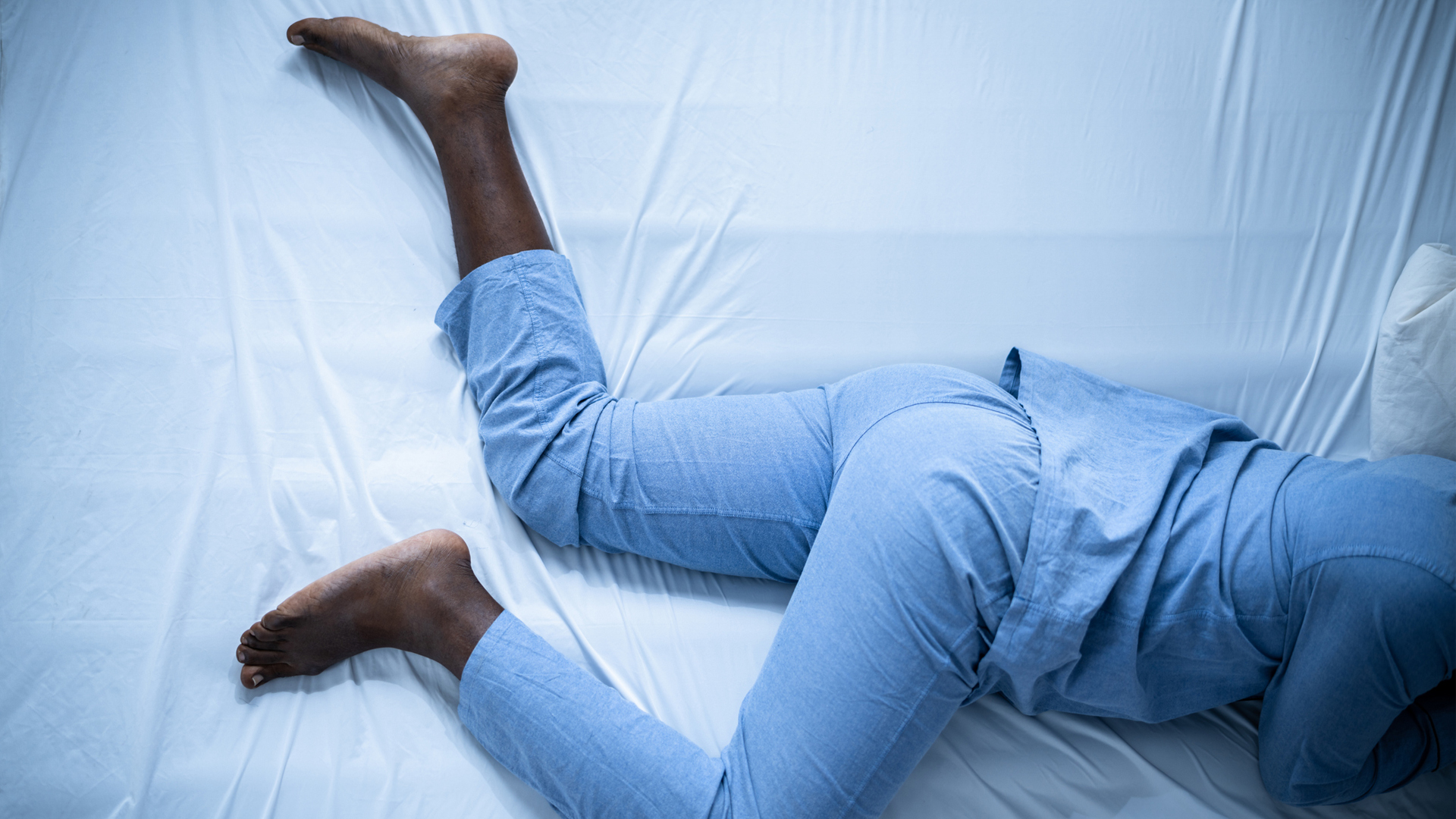Does magnesium help restless leg syndrome?
Does taking magnesium for restless leg syndrome work? We’ve spoken to experts to find out

Restless leg syndrome is a condition that’s disruptive to sleep and causes frustration and discomfort in those who experience its symptoms. Early research suggests taking magnesium for restless leg syndrome may help to relieve some of this discomfort because it helps with muscle relaxation and nerve health.
Magnesium is a mineral we store in our skeletons, for use in processes such as energy release from food, DNA synthesis, blood pressure regulation and nerve and muscle function. Good sources of magnesium include nuts, seeds and green, leafy vegetables.
Magnesium deficiency (hypomagnesemia) can be responsible for muscle twitches and cramping, which may be troublesome for those with restless legs syndrome. Those at particular risk include alcoholics and those with underlying conditions that affect their nutrient absorption, such as inflammatory bowel disease (IBD). The best magnesium supplement may help in controlling these conditions, but for most of us, ensuring that we consume enough magnesium rich foods is enough.
What is restless leg syndrome?
Restless leg syndrome (RLS) is a condition that affects 5% to 10% of adults, according to the National Library of Medicine. Symptoms include an itching, burning or creeping sensation in the feet and lower legs that causes the urge to move or twitch to get rid of the feeling. It happens when those with the condition are still for too long, such as when they attempt to sleep or on long journeys. Symptoms go away with movement and generally return once the person is still again. Those with restless leg syndrome may move, itch, smack or stamp legs to get rid of the feeling.
Dr Deborah Lee, a medical doctor and writer for Dr Fox Online Pharmacy, explains how difficult restless leg syndrome can be to live with.
“When these sensations come on, a person with RLS feels the need to move their limbs to obtain relief and will constantly shuffle their legs around in the bed or get up and move around the room,” she says. “Some sufferers find it hard to go out in the evenings, to places such as a restaurant or a cinema, for fear of having to sit still.”

Having worked for many years in the NHS, initially as a GP, and then as Lead Clinician for an integrated Community Sexual Health Service, Dr Deborah Lee now works as a health and medical writer, with an emphasis on women’s health. She is a menopause specialist.
She goes on to explain that restless legs can cause severely interrupted sleep, as those affected typically often walk around the house at night. Sometimes, patients may also have involuntary jerking of the lower limbs referred to as ‘periodic limb movements’.
A comparative study in the Romanian Journal of Neurology and Psychiatry took brain activity readings of patients with restless leg syndrome over an eight-hour period. They observed frequent sleep disturbances and a reduction in the duration of REM sleep, as well as frequent periods of wakefulness.
Lee explains that RLS is more likely to affect certain groups. “It most commonly begins in people aged 40-50,” she says. “The diagnosis is most often made in those aged over 65, but it can occur in children. It is a chronic condition that tends to worsen with age and 60% of sufferers have a positive family history suggesting an underlying genetic predisposition. RLS is more common in pregnant women and in those on haemodialysis for kidney failure. It is also associated with medical conditions such as diabetes, iron-deficiency anemia, and migraines.”
- Related: What's the science behind taking magnesium for headaches?
- Related: Nine benefits of magnesium
What’s the link between magnesium and restless leg syndrome?
According to Roxana Ehsani, a registered dietitian nutritionist and national media spokesperson for the Academy of Nutrition and Dietetics, magnesium is responsible for many different functions in the body, such as helping regulate muscle and nerve function.
“One main role is that it helps the muscles and nervous system relax,” she says. “Restless leg syndrome affects the nervous system and can cause pain or sensations in the legs. Magnesium can work to relax the muscles and researchers have found that people who were supplemented with magnesium who had restless leg syndrome found relief from their symptoms and were able to sleep better.
“People with RLS can also try to focus on incorporating more magnesium rich foods into their diet, by adding in more dark leafy greens into meals or consuming more whole grains like brown rice, whole wheat breads and whole wheat pasta, and using more lentils or beans when cooking instead of meat. Also try to sprinkle more nuts like almonds and pumpkin seeds onto your food.”

Roxana Ehsani is a Board-Certified Specialist in Sports Dietetics and a National Media Spokesperson for the Academy of Nutrition and Dietetics. She holds a Bachelors of Science in Human Nutrition, Foods and Exercise from Virginia Tech and a Masters of Science in Clinical Nutrition and Dietetics from the University of Pittsburgh and completed her dietetic internship at the University of Pittsburgh Medical Center.
A 2019 article in Sleep Medicine Reviews concluded that more quality research needs to be undertaken in order to definitively say whether or not magnesium helps with restless leg syndrome. A clinical trial in Sleep indicated that magnesium supplementation may be a helpful alternative therapy, but that a placebo controlled study would be needed for more conclusive results. The link between magnesium and restless leg syndrome is still deemed useful, however, due to the large amount of anecdotal evidence supporting it.

How else can you manage restless leg syndrome?
Lee says that good sleep hygiene is a helpful first step for managing restless leg syndrome.
“Make sure you have a proper bedtime routine, keep the bedroom cool and dark, avoid caffeine and alcohol after 6pm, and don’t use any blue-light devices within two hours of bedtime,” she says. “Wind down for sleep with a hot bath and relaxation techniques, such as breathing exercises or aromatherapy. Make sure you exercise every day, for example, a half-hour brisk walk, but do not exercise within 3-4 hours of getting into bed, as exercise releases endorphins and these keep you awake.”
A review in the Mayo Clinic Proceedings suggests that magnesium and intravenous iron can be effective treatments for restless leg syndrome. It also indicates that other causes of restless leg syndrome, such as medication, should be considered in treatment and that avoidance of nicotine, alcohol and caffeine may help.
This article is for informational purposes only and is not meant to offer medical advice.
Sign up for the Live Science daily newsletter now
Get the world’s most fascinating discoveries delivered straight to your inbox.

Lou Mudge is a health writer based in Bath, United Kingdom for Future PLC. She holds an undergraduate degree in creative writing from Bath Spa University, and her work has appeared in Live Science, Tom's Guide, Fit & Well, Coach, T3, and Tech Radar, among others. She regularly writes about health and fitness-related topics such as air quality, gut health, diet and nutrition and the impacts these things have on our lives.
She has worked for the University of Bath on a chemistry research project and produced a short book in collaboration with the department of education at Bath Spa University.










